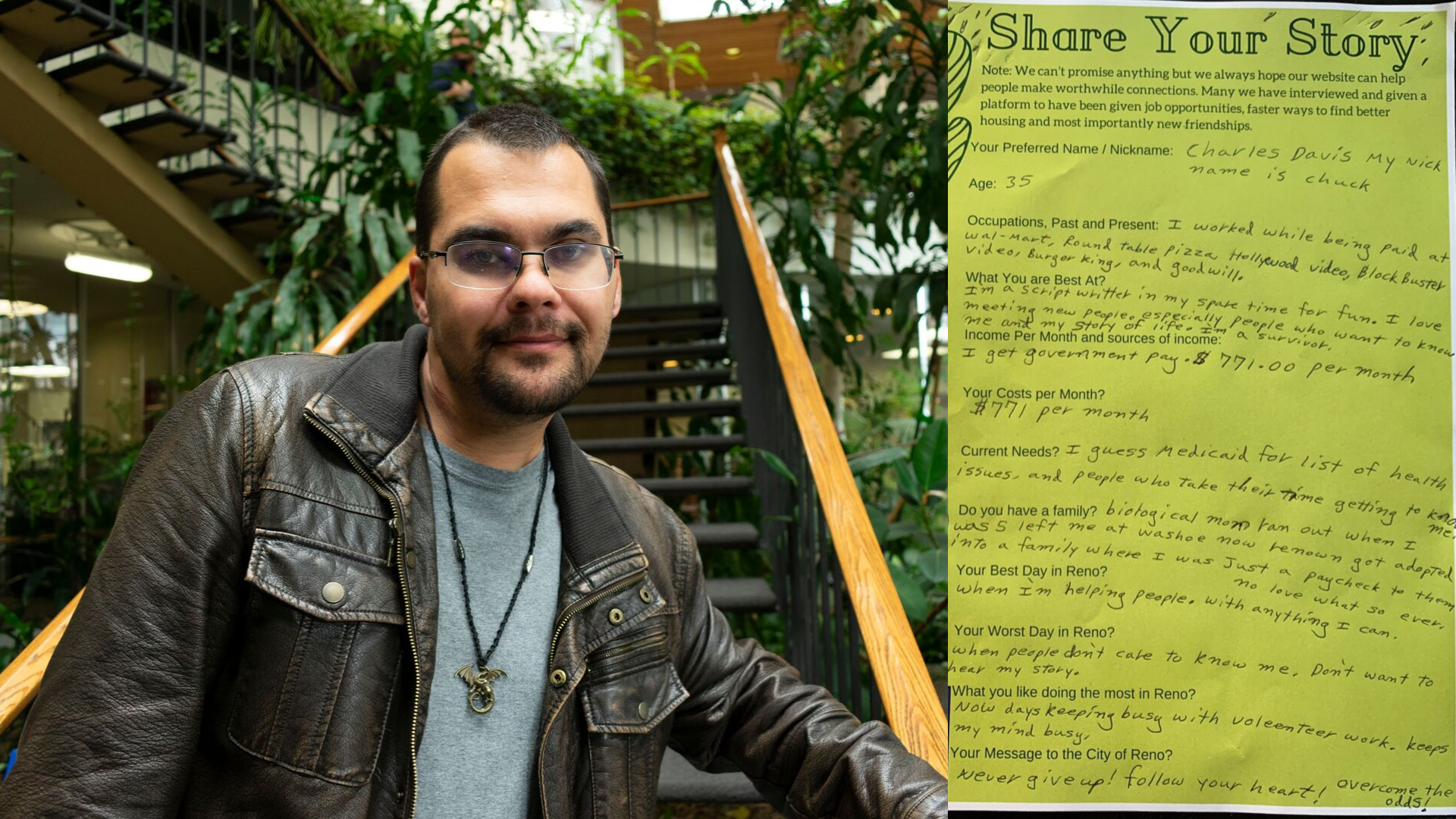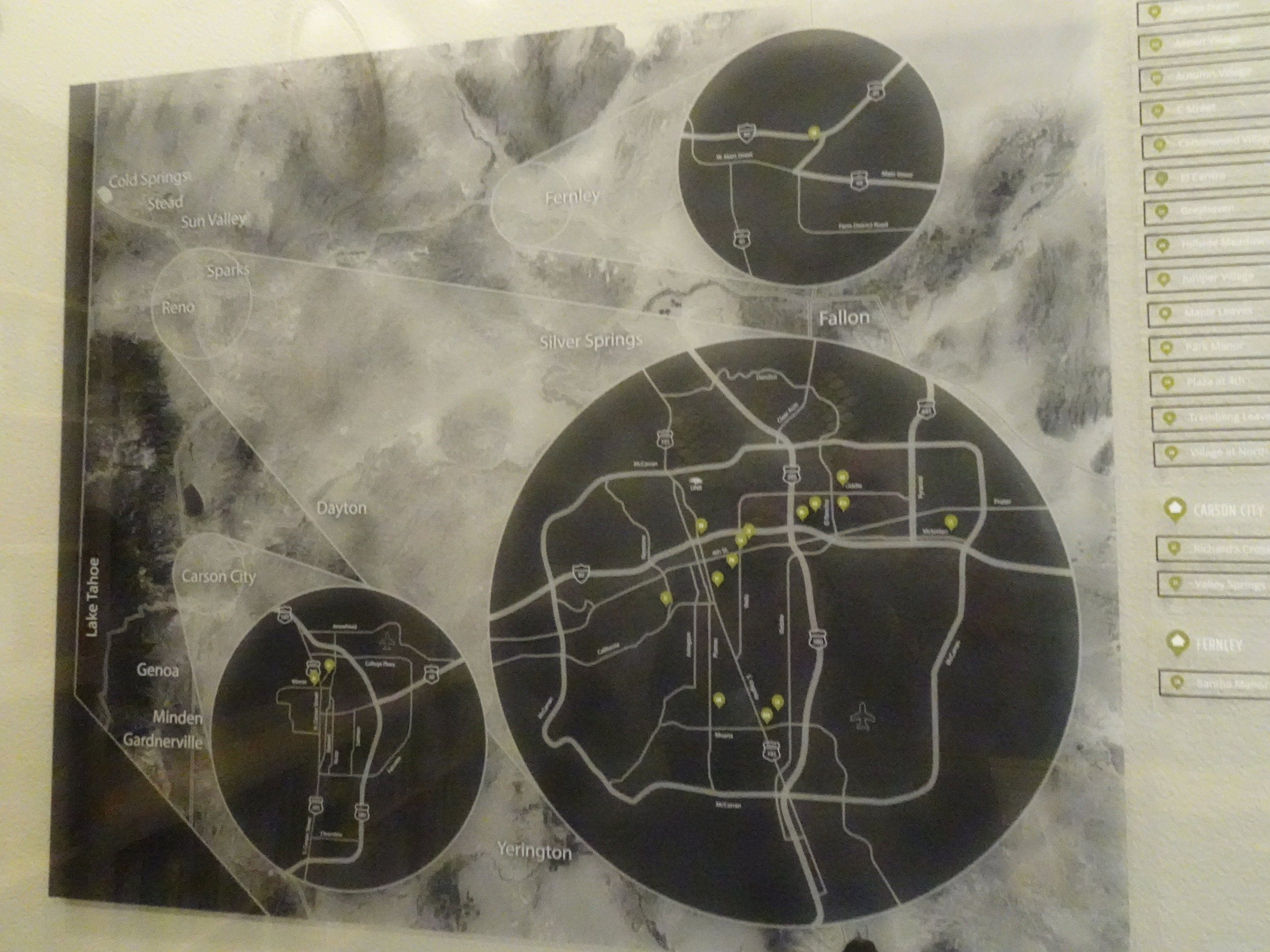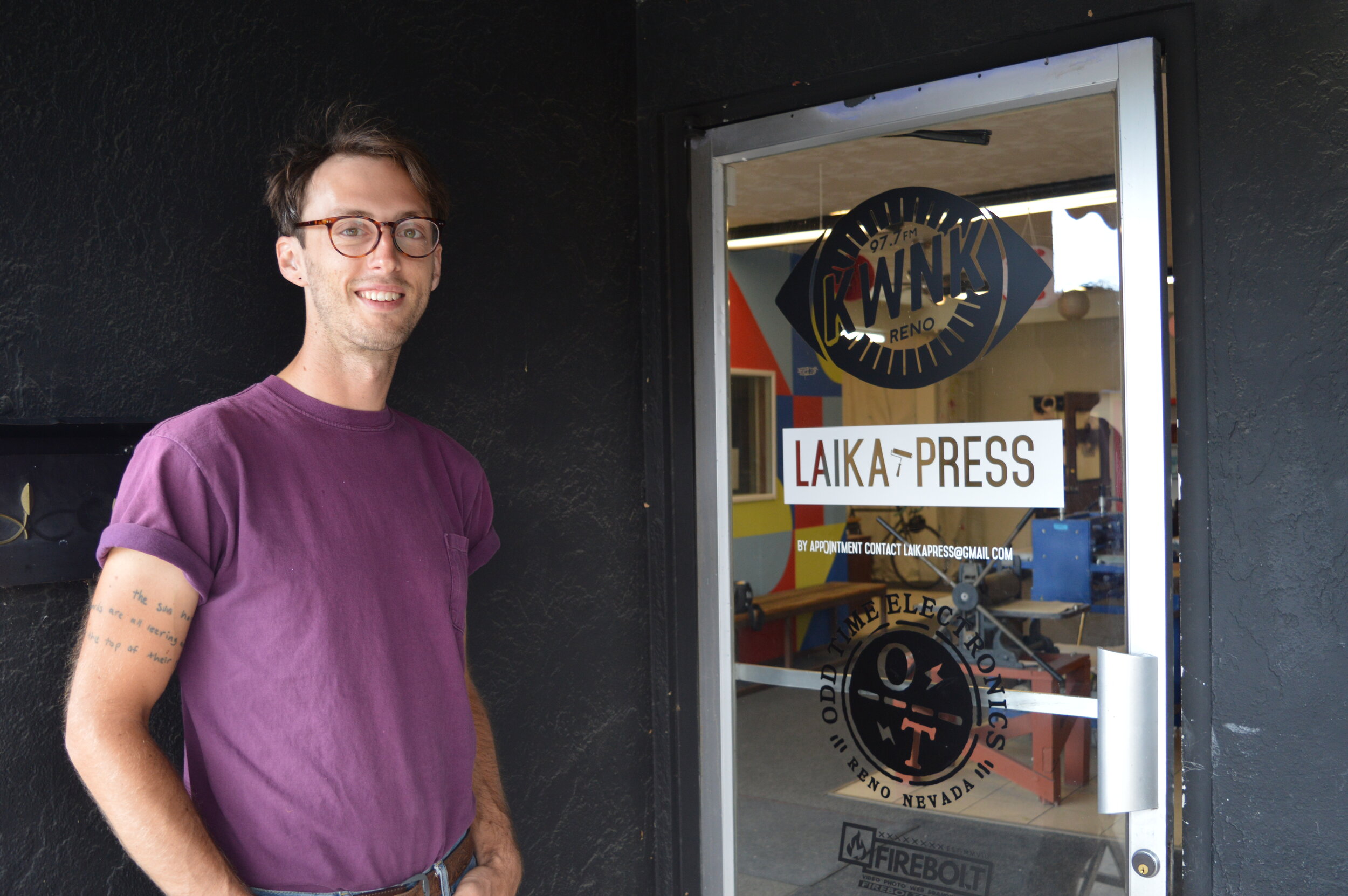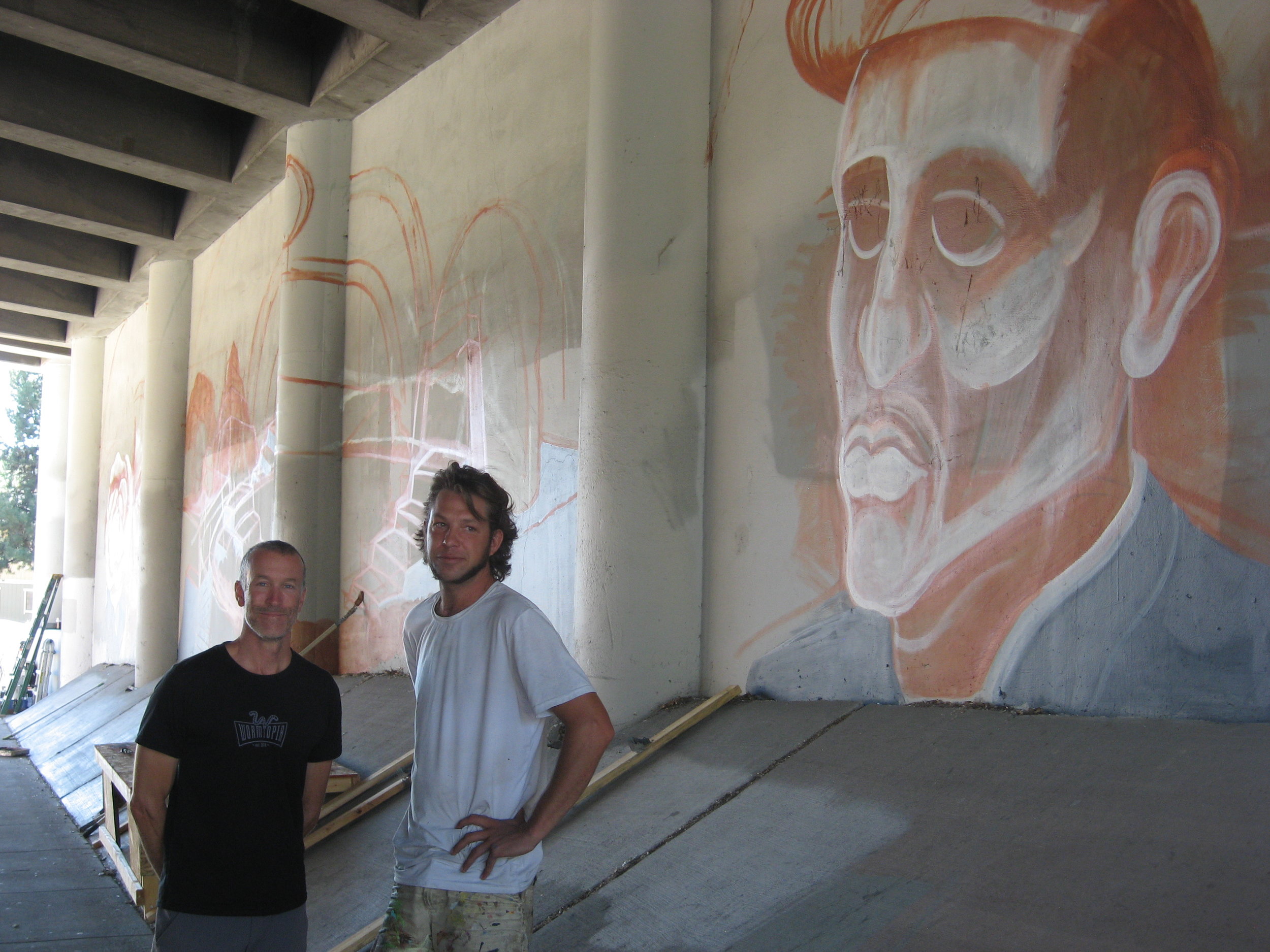Giving Back after Losing Her Son
Art, performances, literature and more---that’s what one foundation brings to veterans in hopes of helping them with their reintegration into the community. The David J. Drakulich Foundation For Freedom of Expression (DJD Foundation) got its nonprofit status in 2011 and has different programs like open art studios, writing workshops, performances, and community discussions for veterans and their families. Tina Drakulich founded the DJD Foundation after losing her son David Drakulich.
"My husband and I, and my family, my two surviving children had experienced loss from war. My son, their brother, David J. Drakulich, was killed in Afghanistan in 2008 and he had been an artist,” she said.
“He had really believed that the thing that he had to give to his country, was his military service after being attacked on 9-11. After we experienced that loss, my first instinct as a mom is, well, he's not here to build the legacy that I would experience as a mother living with a living son, so, it became my job to do that. That was a removal from my grief so that I could work constructively towards a positive outcome for others," she said.
Drakulich said processing trauma through art can be healthy for veterans and their families. When Our Town Reno visited the DJD Foundation, Drakulich was partaking in Combat Paper Nevada, a process in which old uniforms are turned into paper, an art form Drakulich said can be therapeutic.
“I just found that although it was a very scary thing to try to do, once I had completed my first set of paper made out of David's uniforms, I really started to feel like it was empowering and healing and I wanted to share that with everyone else,” Drakulich said about her first creation for Combat Paper Nevada.
Folding Papers into Art to Heal
After losing David, Drakulich found herself folding old papers that belonged to him into paper cranes, which she considered to be a part of her healing process. She also said art can help veterans share their own stories and experiences.
"It's helping veterans who are wishing to reintegrate. I know that a lot of our veterans have got disabilities of both mental and physical, and they seem to get the most immediate benefit from all of these activities,” Drakulich said.
She also wants people who aren’t in the military to get a better understanding of veterans’ experiences through a program called Dialogues on the Experience of War, which supports study and discussion on issues raised by war and military service.
“We aim to really bring the civilian community into the conversation because we have learned that, number one, a lot of civilians don't really have any idea as to what it was that these current serving soldiers face,” she said. “We figure that, that's the citizenry that votes and that's the citizenry that's going to be accepting reintegrating soldiers. So, that's the community that needs to be knowledgeable about what is going on in our world today,” she said.
"I believe in the arts. I believe that our community needs the arts. I believe that an artful community is a healthy community. I also believe that a world without art just might not be worth fighting for in the first place," Drakulich said.
Teaching and Doing
Drakulich said that the practice of humanities is often removed from people in order for them to perform their tasks in the military, and that humanities must be returned to them upon coming back.
Gene Hughes served as a missile repairman during the Vietnam era. He’s now the art director for a majority of the programs the DJD Foundation offers. He’s heavily involved in the Veterans Art Project, an open studio.
"[Art] gives veterans a way to express themselves and to share with the world the things they've learned while becoming a veteran,” Hughes said. “Speaking as a vet, we need to share with our communities and our communities need to share with us. I've always felt that the best liaison between groups is art," he said.
Hughes has a distinct style of teaching. Instead of having the class follow his art style, which is graphite portraiture, he allows people to explore any medium they desire, so they can tell their stories the way they want to. Hughes strongly supports veterans’ freedom of expression.
"It's really important because that's the foundation on which this country was founded, freedom of expression. When I fought for this country, I wanted to come back and be able to express myself freely. I think artists appreciate that right more than just everyday people," Hughes said.
"What I've learned about myself is that I have a lot more to give. I thought that I was through being an artist and I was wrong. Working in this community and extolling the virtues of art, made me realize that I am still an artist and I think I will continue to be an artist," Hughes said.



















![“People have to be able to have a place to sleep,” Reese said of one of his priorities for his campaign. “I'm interested in exploring things like, the idea of a community-based camping ground. [It can be] a space where people can be safe, where they…](https://images.squarespace-cdn.com/content/v1/5675d221cbced60a236e28b8/1571428907049-O93TEM7B1HWG1KUFCX0T/72724598_2102277536735020_3871048539211563008_n.jpg)












![Benjamin remains confident in keeping printmaking relevant, as he says it’s an art form unlike any of the others. “[Printmaking] is an interesting thing because it’s in between having an original item that you produce and having multiples,” Benjamin…](https://images.squarespace-cdn.com/content/v1/5675d221cbced60a236e28b8/1569553478605-OTELRZZO0H4AXXUX7IZI/Press+3.JPG)
























![“We're losing people every winter,” Wendy Wiglesworth said of Reno’s homeless population and cold months coming soon. “Last year there was not a single day that there was an open bed [in the tent] or at least one to three people on the floor when I …](https://images.squarespace-cdn.com/content/v1/5675d221cbced60a236e28b8/1567824946701-3HBTA7HKG30MLLWYDSQZ/Screen%2BShot%2B2019-03-10%2Bat%2B2.02.09%2BPM.png)




![“Community is only as strong as its weakest link and so I think really just having that compassion and awareness that these are still people. [...] We exist as a community and we are not going to be able to survive as a community if we just keep lea…](https://images.squarespace-cdn.com/content/v1/5675d221cbced60a236e28b8/1567443452225-5QI38SOPCYH0DTBC1T1Y/sign.jpg)










